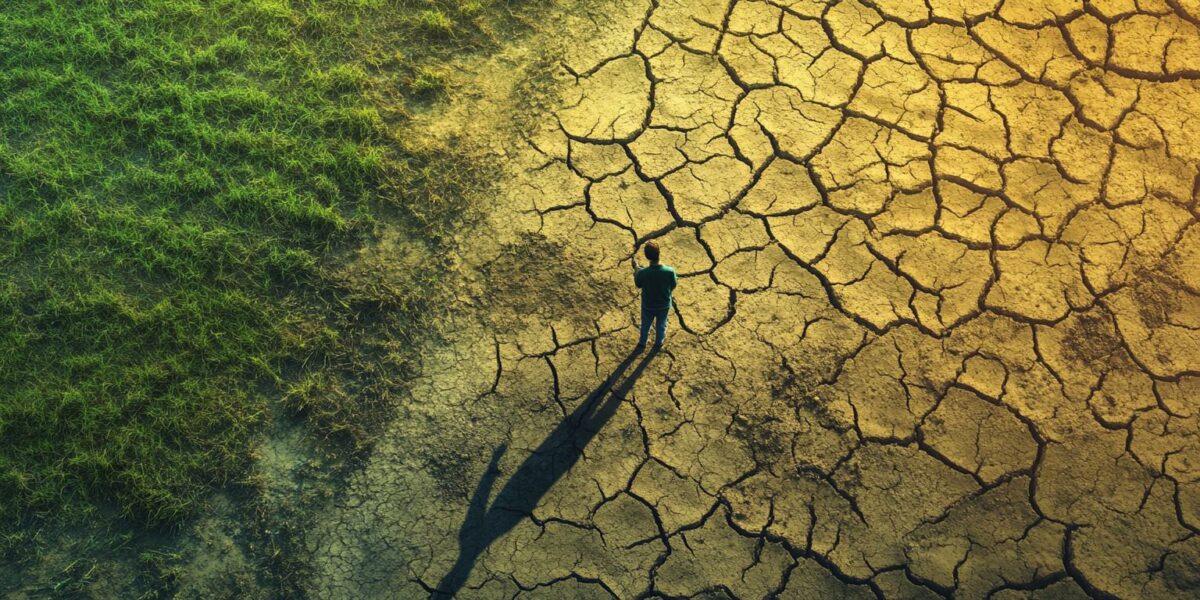The Hidden Crisis Beneath Our Feet
During a crucial debate, Tim Walz brought attention to a matter that’s rapidly gaining momentum – the climate crisis’s impact on soil. As he spoke, the urgency of the issue became undeniable. The constant cycle of flood and drought has not only trapped farmers but has also threatened the very soil they depend on.
Walz emphasized that soil is critical for agriculture, yet it faces unprecedented threats. The United Nations Food and Agricultural Organization warns of a grim future where 90 percent of the planet’s topsoil could vanish by 2050. This alarming statistic underscores the severity of the situation.
Furthermore, a recent study highlights that the U.S. is losing topsoil at a rate five times higher than it can regenerate. The areas along the Mississippi and Missouri Rivers are particularly vulnerable, with corn and soybean fields suffering the most. The agricultural backbone of these states is at risk.
In Minnesota, the first upstream portion of the Mississippi River, the problem is equally severe. As Walz pointed out, the loss of topsoil is not just an environmental issue but a substantial agricultural concern that requires immediate attention.
The Global Soil Erosion Threat
The FAO has issued a dire warning: every five seconds, an area equivalent to a soccer pitch erodes. This rapid degradation of soil is a global crisis demanding urgent action. Countries that are part of the Global Soil Partnership must step up their efforts to prevent further loss.
Soil health is integral to combating climate change. Regrettably, losing it means losing a vital ally in carbon storage. A staggering 75 percent of terrestrial carbon resides in the soil. By disturbing it, we not only release carbon but also methane, which worsens the greenhouse effect.
Healthy soil acts as a sponge, capable of holding eight times more water than all the world’s rivers combined. Without it, we face extreme weather patterns that disrupt agriculture:
- Intense rainfall exacerbates soil erosion.
- Rising temperatures introduce new pests and diseases.
- Wetter springs hinder planting seasons.
These challenges directly affect farm productivity, leading to economic losses and threatening food security.
Lessons from the Dust Bowl
The Dust Bowl of the 1930s serves as a grim reminder of what can happen when soil health is neglected. During a historic drought, poor land use practices combined with natural conditions to create an environmental disaster of epic proportions.
The devastation was immense, with over three million people displaced and thousands of deaths from “dust pneumonia.” The legacy of the Dust Bowl is a cautionary tale, illustrating the dire consequences of ignoring the land’s needs.
Franklin Roosevelt’s New Deal introduced soil conservation measures that eventually helped restore the land. Techniques like erosion control and terrace farming were pivotal in recovering the Great Plains. Yet, it took nearly a decade for regular rainfall to return.
Walz’s insights during the debate remind us that the lessons of history must guide our actions today. We cannot afford to overlook the critical role soil plays in our survival and the broader climate crisis.
The Need for Immediate Action
Minnesota, with its vast agricultural landscape, stands at the forefront of the soil crisis. With over sixty-seven thousand farms producing a range of crops and livestock, the stakes are high. The climate crisis poses a direct threat to these farming communities.
The impact isn’t limited to crops. Rising temperatures affect animal health, reproduction, and growth. Heat stress in livestock leads to reduced productivity, affecting the entire agricultural supply chain.
As Walz highlighted, the climate crisis on the ground is an urgent concern. The “quiet crisis” of topsoil loss must no longer be ignored. It’s a call to action for policymakers, farmers, and communities to work together to safeguard our soil.
By addressing the underlying causes of soil degradation, we can pave the way for a more sustainable future. Walz’s words resonate as a powerful reminder of the need for immediate and decisive measures to protect our precious soil resources.



stella_midnight
Does anyone else feel like these warnings about soil erosion are too little too late?
Penelope
Sounds like we need another New Deal for soil conservation! Great insights from Walz.
Amelia
How can we protect our soil without compromising on the productivity of our farms?
hudson3
What do you call a debate about soil erosion? A “ground-breaking” discussion! 😂
NalaLuminous
I’d like to see more on how we can practically implement this in our local communities.
Adeline_Stardust4
Is this really as urgent as he says, or is it being exaggerated for political reasons?
katherinesolar
Thanks for bringing this up! 🌱 Soil health is often overlooked in climate discussions.
ariana
Tim Walz makes a good point, but aren’t there already measures in place to combat soil erosion?
max
Wow, I had no idea soil was eroding so fast! What can we do to help save it?